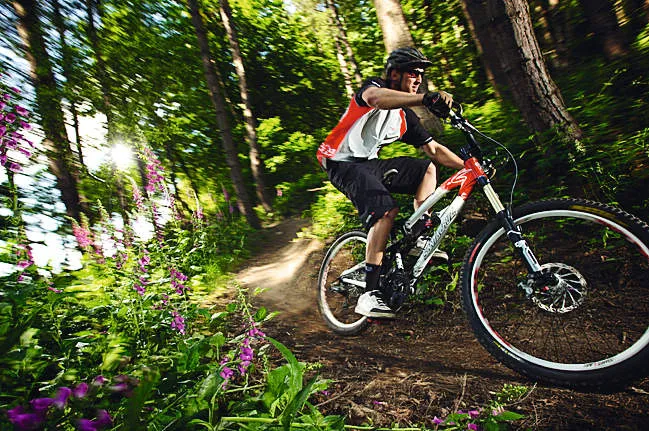Riding smoother makes you faster, saves energy and gives you more control and comfort. We look at what you can do to smooth your ride, from simple changes to your bike setup to how you tackle the trail itself.
Don't rush out and buy that double-triple-clamp fork you've been lusting after just yet. There's actually plenty you can do with what you've already got.
Four easy ways to get start getting smooth
1 Try riding on softer tyres. Low-pressure tyres are a great example of how you can become faster and they’re also the easiest way to smooth your ride. Soft tyres and suspension might feel slow and squishy when you’re sprinting up a road, but you’ll have an instant advantage as soon as you hit rougher trails.
Basically any bump, rock or root that knocks you or your bike up or back is stopping you going forward. Add several small root or rock strikes or a couple of big wallops and you’ll soon lose momentum and stall.
But if your tyres, suspension or even you yourself, suck up the bumps before they knock you upwards or back, you’ll keep the momentum and speed. And try to ensure that the tyres are in constant contact with the ground.
2 Balance your body position. If your body stays balanced over the bike you’ll have much better grip and an improved position for keeping control too. This means you can pick the smoothest line and keep the power on and the brakes off – making the ride even faster.
Unfortunately a lot of the ways your body senses speed will tell you the opposite.
If you’re bouncing all over the place, with blurred vision, braced arms and your chain clattering you’ll get a real sense of speed, whereas if your bike is quiet but flowing smoothly over and around the stones and pumping not flying the jumps then it’ll probably feel like you’re going a lot slower.
But you won’t have to put our setup and technique tips into action for long to realise you’re suddenly having to wait for your mates after every technical section.
3 Practice makes perfect. While making your bike smooth will help hide flaws in your flow, nothing teaches you truly smooth technique like a hard, unforgiving rig. Ghost riders including Steve Worland and Nick Craig learned to hover and flow by floating fully-rigid 1inch-tyred cyclo-cross bikes over roots and rocks, while Steve Peat started downhill on a fully rigid steel Kona with 1.5 inch tyres.
Luckily, just pumping up suspension and tyres on any bike will give you a great teaching tool – but don’t expect to go fast until you’ve learned smoothness the hard way!
4 Get comfortable on your bike. It’s not just metal on rock you’ve got to consider when tackling obstacles, it’s how to find a comfortable riding position that’ll help on longer rides.
A firm bike might feel great to sprint and rail through corners on smooth trails or when you’re fresh, but that won’t last forever. It’s not just the arm pumping jackhammer effect of holding onto a harsh bike over big boulders or death grip braking down stepped descents either. It’s the continual little stuff that will really fatigue you.
Vibration from gravel or rough cart track comes straight through your wrists and shoe soles and ends up as a bruising ache in your shoulders and back. The constant skip and bounce from the back wheel makes your legs stutter out of rhythm as you try to keep traction.
All this percussion adds up to serious fatigue in muscles that are already working hard. Soon this fatigue spirals into exhaustion or a crash because eyes that have been rattled around can’t see the right line and numb hands lose their grip on the bars.
The good news is it’s exactly this bone-aching buzz that softening your bike sorts out, but it’s what you do as a rider that really counts.
How to tweak a smooth bike set-up
A smooth bike underlines swift riding so take the sting out of your ride with these easy tricks:
Adjust your tyres
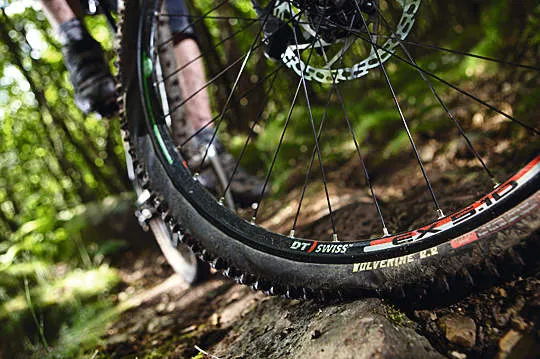
Your tyres are the first thing the trail meets, and soft tyres suck up smaller stones and roots and add traction like nothing else. Really smooth riders can get away with properly low pressures (some DH riders run as low as 20psi) but start at about 30psi to avoid too many pinch flats at first. Running fatter or tubeless tyres lets you run lower pressures without increasing puncture risks and 29inch wheels roll smoother than 26inch wheels.
Tune your rear shock
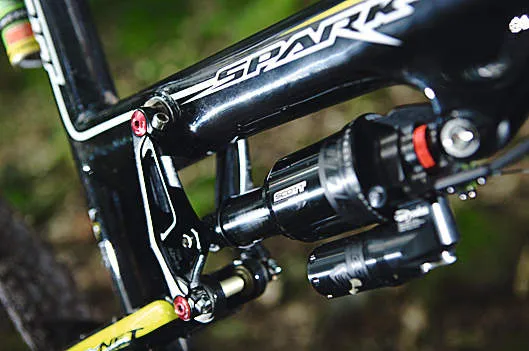
Make sure you get maximum value from your suspension by using all of it. Around 25-30 per cent sag is a good start, but check you’re getting full travel at least a couple of times per ride by looking at the tidemark or indicator ring on the shock/forks.
Adjust your position
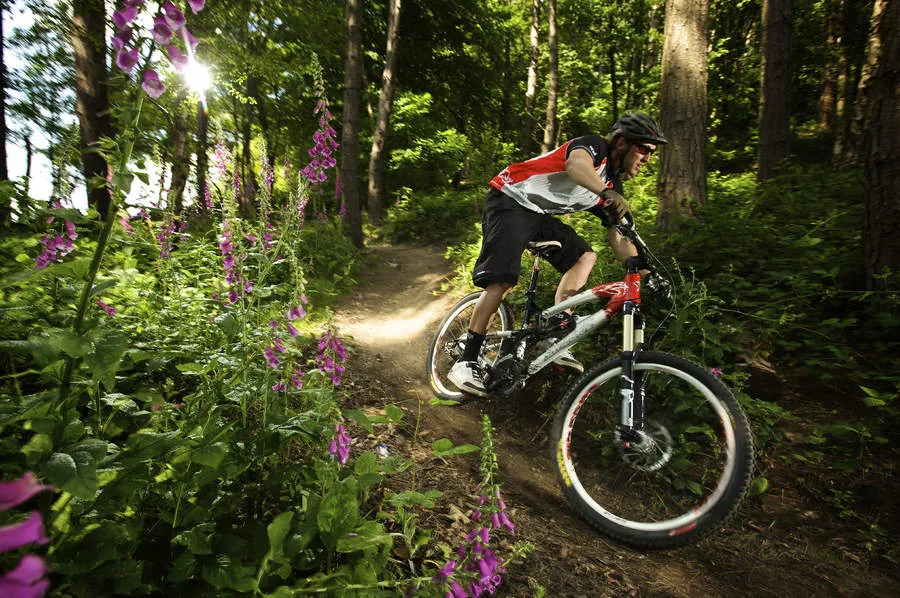
If you’re too stretched you won’t be able to let the bike move smoothly underneath you. To get your flow going, try dropping the saddle a bit, or going for a shorter, taller stem to put you more upright over the bike.
A caution about making adjustments
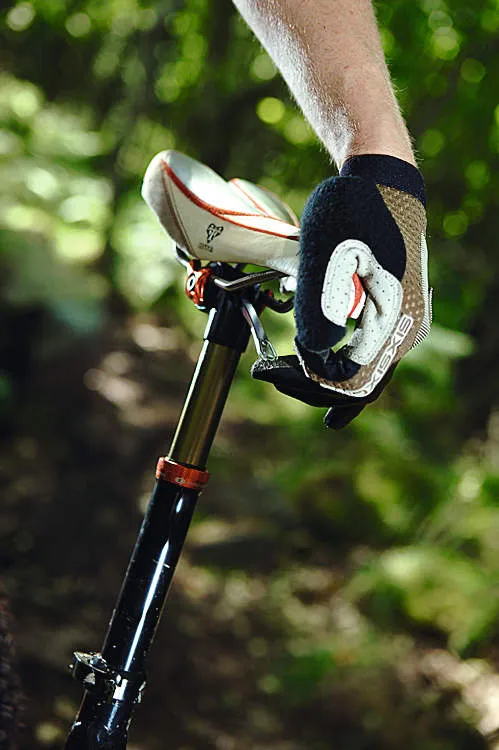
Any adjustments in pressures and position should always be small and gradual – otherwise you’re asking for assorted unfamiliar bike response problems such as pinch punctures and fork dive.
How to tidy your technique for a smooth ride
Prepare yourself to absorb the trail
Tyre compression and suspension travel are measured in millimetres, but your arms and legs can move up to half a metre! You have to be positioned right in order to use that movement though.
Flex your limbs
Keeping your arms and legs slightly bent and loose, means they can immediately bend further to suck up shocks or drops quickly. You can also push down into corners and jumps to get extra drive or traction.
Relax and breathe
Don’t death-grip the bars or hold your breath or you’ll tense up and lose the smooth flow. Concentrate on breathing deeply and keep your hands as loose as possible and you’ll feel a lot calmer and more controlled.
Be yourself... your smooth self
Go with whatever feels smooth to you, don’t fight it. Even the best riders in the world are all different but they know if it doesn’t feel natural they won’t flow.
Glide over the trail
How you work with the trail is a big part of achieving a flawless ride. The secret is switching your body’s emphasis so the bike hits the side of lumps. This should make you faster instead of slowing you down
Pump it over speed humps
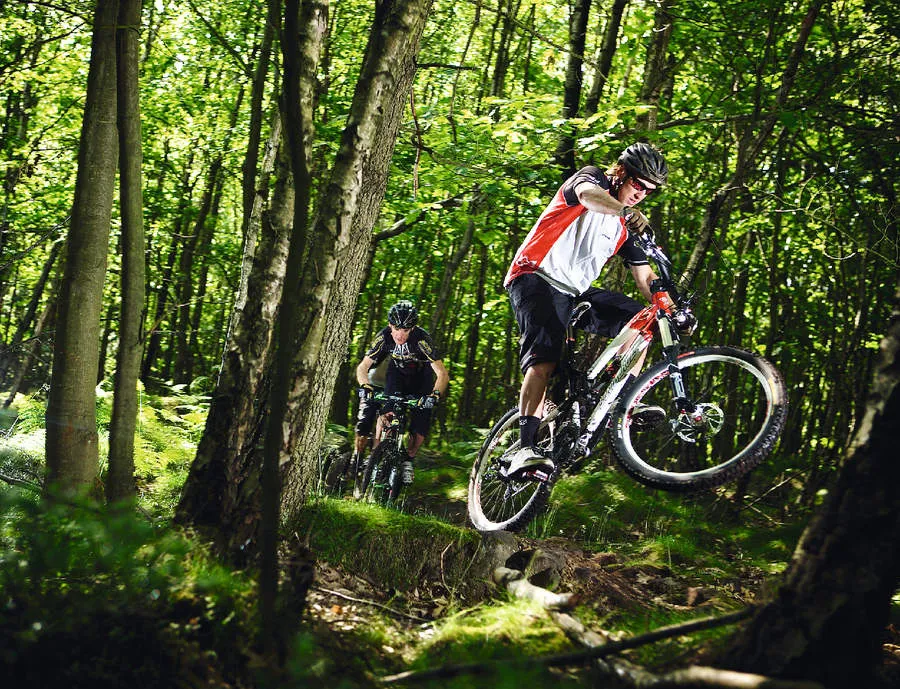
The obvious examples are jumps or rollers, which can fire you up in the air or knock you back on every upslope. Instead, suck up the launch side and then squeeze the bike down the backside of the jump to push yourself forward.
Push it through the berms
Use the same technique in bermed corners too. Let your body compress as the bike pushes back against you in the first part of the turn, then push back as you exit to fire the bike off down the trail.
Reassess your lines
Don’t always assume the smallest rocks and drops make the smoothest, fastest line choice. Sometimes it’s quicker and smoother to hit a couple of big chunks fast and straight rather than getting caught up in the detail.
Watch and learn from other smooth operators
Follow behind faster or just smoother riders around local trails. Watch the footage on www. freecaster.tv to see how the latest World Champion Gee Atherton uses kickers to fire him into the tightest cornering lines. Wherever you get new ideas on how to smooth out your riding and work the trail to your advantage, it’s all good.
How the pros do it
To show you how to gain a speed edge, we spent a day with two of the most experienced operators in the business – multiple national XC, cyclo-cross and marathon champion Nick Craig and multiple World Cup and national DH champion Steve Peat.
We had all sorts of preconceived ideas about ideal position before we started shooting with Nick and Steve. But the most noticeable thing was how different we all looked, even riding the same sections at the same speed.
Steve is really tall and stiff-looking on the bike, but pushes and pops through corners so fast he was gaining a metre every three even without pedalling.
Meanwhile Nick has an aggressive forward-weighted ‘bulldog’ style but barely seems to touch the trail.
Then there’s me, thinking I’ve got the classic bent limbs, weight back ‘attack’ position all sorted, but rattling round like a bag of spanners losing ground on every rough bit.
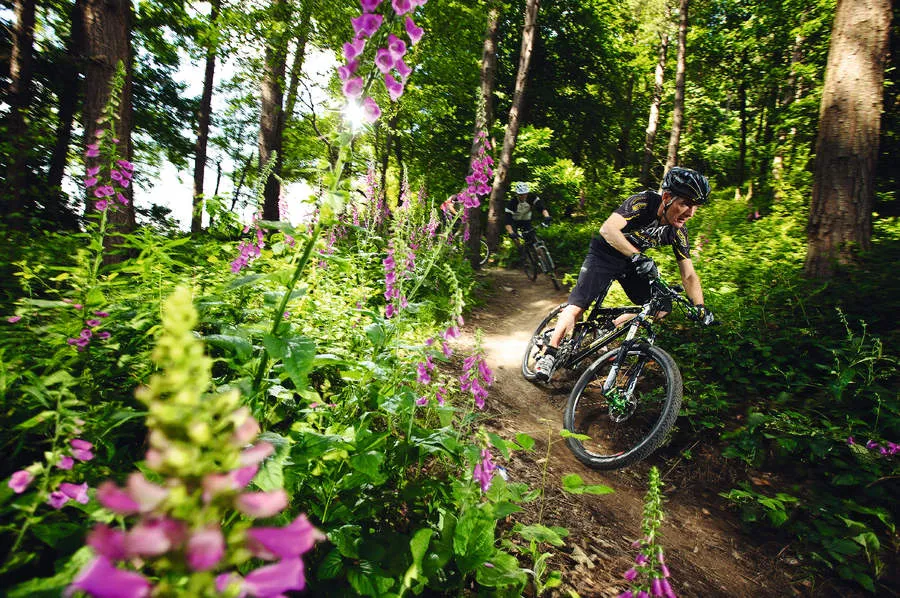
Nick is scientifically proven to be faster and smoother than he should be
Confessions from legendary smooth criminals
Steve Worland, MBUK Ghost rider -in-chief : “I hover over the trails and never actually ‘hit’ stuff because I focus on allowing the bike to rise and fall underneath me. Look for ways of lifting your weight over anything that might slow progress and placing it back down on all the little micro-chutes that help to push you forward.”
Nick Craig, Scott UK: “British Cycling used to think my power test read-outs were wrong because they showed I was nowhere near strong enough to get Top 10s, never mind win any races. Being super smooth and efficient when riding means I’m not wasting my energy resources while everyone else is using up theirs.”
Steve Peat, Santa Cruz Syndicate: “Nothing teaches you to ride smoother than a hardtail with flat pedals. If you’re not smooth on this kind of bike, then you’ll be thrown off straight away – simple as that. The trouble is lots of riders now go straight on to full sus and never learn the basic smooth skills.”
And there you have it. It’s all about skimming softly over the bits of trail that will slow your bike down, but using those bits that can speed it up to maximum effect. Getting your bike, riding position and your mental approach as smooth as possible can make an immediate difference too.
